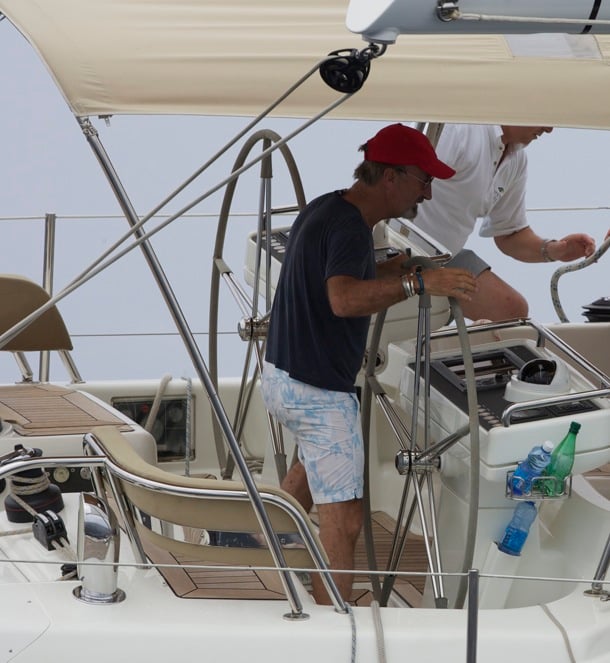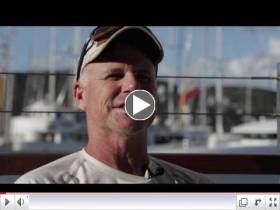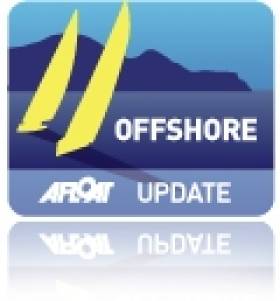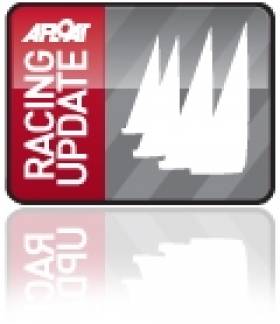Displaying items by tag: Carribbean
Record RORC Caribbean 600 Fleet Ready for Action (Video)
A record fleet of 80 yachts will be competing in the 9th edition of the RORC Caribbean 600 starting from Antigua this morning.
This year's race will see the most spectacular line-up of high performance boats and crews racing from 30 different countries.
The crew list reads like the 'Who's Who' of international sailors with hundreds of round the world, America's Cup, Olympic and Volvo Ocean Race professionals rubbing shoulders with passionate corinthian sailors on the same 600 mile race course around 11 Caribbean islands.
Check out the pre–event video below with an interview with RORC Commodore Michael Boyd of Dublin Bay.
Four Irish On World's Largest Carbon Yacht for Caribbean 600
#CARIBBEAN 600 – A plan to secure line honours at the Caribbean 600 race on the world's largest carbon composite sailing yacht includes four Irish sailors on the 29–man crew. The Royal Ocean Racing Club race route circumnavigates 11 Carribbean islands and begins on February 20th.
The crew on the 200 foot long yacht is composed of many Volvo ocean race and Americas cup veterans and also includes Irish sailors James Caroll, Johnny Mordant, Aaron O'Grady and Mark O'Reilly.
The 67–metre yacht Hetairos was launched on June 2011 in Finland and last year the massive entry won line honours and finished second overall in the IMA Superyacht transatlantic race between Tenerife and the BVIs.
Hetairos is 200 feet long and carries up to 4400 Square metres of sail area.
With less than one month to go, to the fourth edition of the RORC Caribbean 600, the Royal Ocean Racing Club's 2012 programme kicks off with a sensational cast in Antigua.
The RORC Caribbean 600 is a truly international affair, with well over 500 hundred competitors from at least 24 different nations taking part. More than 30 impressive yachts are expected to take part in a high-speed, action-packed yacht race around 11 Caribbean islands. There can be few sporting events that can boast such a worldwide appeal with sailors taking part from all over the world including: Antigua, Australia, Austria, Canada, Cayman Islands, Croatia, France, Germany, Great Britain, Holland, Ireland, Italy, Japan, Malta, New Zealand, Norway, Puerto Rico, Russia, South Africa, Spain, Sweden, St. Lucia, Trinidad & Tobago, Turkey and the United States of America.

The largest yacht in the Caribbean 600 fleet will have four Irish sailors onboard: The magnificent 67m Hetairos. Credit:Hetairos/Baltic Yachts
This astounding diversity of nationalities is matched only by the astonishing array of yachts and personalities. The largest yacht competing this year is the magnificent Hetairos with a waterline length of 200'. Hetairos is the world's largest carbon composite sailing yacht. The 29 crew on board is composed of many Volvo Ocean Race, America's Cup and Jules Verne around the world veterans. Hetairos is among the favourites to take line honours, but there are several other yachts more than capable of finishing in front.
In 2011 American George David skippered Rambler 100 to smash the monohull course record, taking line honours and overall victory. David's team is back, this time with the Reichel Pugh 90, Rambler and they are unlikely to give up the title without a fight. The Spanish Volvo 70, Gran Jotti will be dwarfed by Hetairos, but the former Telefonica Black has a venomous turn of speed and is quite capable of out pacing the entire fleet. On board there is a huge wealth of talent in the form of Spanish America's Cup and Volvo Ocean Race sailors. These three are likely to be contenders for line honours, but overall victory under IRC is far more difficult to predict. A hot contender is Niklas Zennstrom's Judel/Vrolijk 72 Rán, which will be making its debut in the RORC Caribbean 600.
"For me it's very refreshing to tackle a new race and the Caribbean 600 is a real fascination," explained Hayles. "It's unlike any other offshore race in that the average leg is only about 40 miles and for a navigator there is a lot to consider. Normally, a race is all about the weather and strategy but in addition to all that, this race takes you back to the basic problem of navigating around so many rocks and islands. Looking through all the legs, there is a broad mixture of sailing angles; there is a fair bit of reaching, but it is wrong to think that is not a challenge, especially with the speed sensitivity of modern high-performance boats. The course is more like a whole stream of complex coastal races. I have to say that it is a pretty unique race."
A dazzling variety of yachts crewed by some of the world's finest will be racing this year. However, not all of the competitors are seasoned professionals. One of the smallest yachts competing this year is J/39 Sleeper, which will be raced two-handed by a father and son team. Jonty Layfield and son Jack are both RORC members and hale from Brighton, UK. Last year with a full crew, Jonty's won class at Antigua Sailing Week:
"Sailing Two-Handed with my son, I don't expect to be very competitive, we are not going to go flat out but treat the race more like a delivery trip," admitted Jonty. "I have raced double-handed with my son back in England and I have been sailing with Jack since he was about five years old, we are more like friends than father and son. The great thing about sailing is that you have to get on with it; you can't have any histrionics. Jack is working in Brazil at the moment and the RORC Caribbean 600 is a great way to spend a few days together."
Close duels are expected right through the fleet, none more so than in the Class 40s where a hard fought and close encounter is expected. Tradewind sailing provides perfect conditions for Class 40s, with long reaches and downwind legs, these pocket rockets are capable of surfing at speeds of up to 25 knots. Peter Harding's 40 Degrees has Hannah Jenner as skipper, the only female to skipper the Clipper Round the World Race. Hannah was in fine form last year, gaining a podium position in the Class 40 Transat Jacques Vabre:
"Antigua is a beautiful place to start the season with some winter sunshine and I have heard that Antigua Yacht Club provides a great party!" smiled Hannah. " The race course has plenty of activity with sail changes and the competition should be really close. Making the right tactical decisions will also be very important if we are to be the fastest Class 40 around the track. I am really looking forward to the race."
Hannah Jenner on Peter Harding's 40 Degrees in the 2011 Transat Jacque Vabre/ Credit: Alexis Courcoux
RORC Chief Executive Eddie Warden Owen believes that the RORC Caribbean 600 is especially attractive to larger yachts, however the ethos of the club maintains equal status to every participant.
"A wide spectrum of yachts and competitors has decided that this is an event that is not to be missed. The club is delighted that people from all over the world want to take part. There is a mixture of world class sailors and corinthian enthusiasts, but they all have one thing in common, a passion for offshore racing."
"This average length of yacht for this year's entry is over 70'. When the Royal Ocean Racing Club started this race in 2009, we felt it would appeal to larger yachts and that has proved to be the case. This year we have a significant number of Racing Maxis, Super Yachts and Spirit of Tradition yachts. However, every yacht competing in the RORC Caribbean 600 is governed by the same set of rules. All of the competitors receive a warm welcome from the Antigua Yacht Club, regardless of their finish time or place. Since 1925, The Royal Ocean Racing Club has promoted offshore racing for all and in many ways the RORC Caribbean 600 typifies that cause."
The 2012 edition of the RORC Caribbean 600, organised by the Royal Ocean Racing Club and hosted by the Antigua Yacht Club, will start on Monday 20th February 2012.
Past Results:
RORC CARIBBEAN 600 TROPHY - IRC OVERALL
2011 - George David, Rambler 100, JK 100 (USA)
2010 - Karl C L Kwok, Beau Geste, Farr 80 (HKG)
2009 - Adrian Lee, Lee Overlay Partners, Cookson 50 (IRL)
Records:
Multihull record holder - Region Guadeloupe in 40 hours 11 mins 5 secs (2009)
Monohull record held by Rambler 100 in 40 hours 20 mins 02 secs (2011)
Eddie Jordan Racing...On Water
Irish F1analyst Eddie Jordan might be better known for exploits on tarmac than the high seas but it did not stop the 63-year old Dubliner sailing a smart race to win in the south-eastern Caribbean Sea today in day one of the Oyster Regatta writes Louay Habib. But the F1 man's powerful Oyster 655, Lush was pushed all the way by Chris Shea's Oyster 72, Magrathea.

Eddie Jordan at the helm of the Oyster 655, Lush. Photo: Ingrid Abery
Grenada's lush, green paradise relies on rain and on the morning of Lewmar Race Day, the Oyster Fleet certainly got that. But despite the torrential downpour, the mood in Port Louis was up beat and all of the fleet left the dock, to perform a parade of sail, before heading out to the race area.
As if by magic, shortly after the start an easterly wind blew away the rain clouds. Providing dry, if somewhat tricky conditions. During the course of the day, there were numerous wind shifts, predicting these changes was the secret to success. A light airs start was followed by a building breeze, which piped up to fifteen knots by the end of the race.
Starts are always important but especially in fickle breeze and the Polish Oyster 46, SunsuSea, judged the line to perfection, to get away well. Owned by Mariusz and Paulina Kierebinscy, SunsuSea came to the Caribbean in the 2009 ARC.
"We have been really delighted with the boat." Smiled Mariusz. "My family love to sail, especially in the Caribbean. This is our second Oyster Regatta and although we have little experience with racing, it is a great way to learn how to improve our sailing technique."
Besides Mariusz and Paulina, SunsuSea is crewed by their family and friends. Daughter Claudia and son Martin are fast learners in the cockpit. Whilst friends, Artur and Margaret trim the mainsail, helped by their daughter Adriana, who is just 11 years of age.
"We really like Grenada." Continued Mariusz. 'It is such a friendly place and safe for our children. After the regatta, we will be cruising through The Grenadines to St. Lucia, our last adventure before the boat returns across the Atlantic."
In Class One, Lush, with F1 racing analyst, Eddie Jordan on board, sailed a smart race to win, but the powerful Oyster 655 was pushed all the way by Chris Shea's Oyster 72, Magrathea, who sailed a near perfect beat by using the lifting breeze, along Grande Anse Beach. Jonathon and Jane Mould's Oyster 72, Koluka claimed a well-deserved third in class.
Alan Brook, taking part in his first Oyster regatta as a competitor with his wife Sue in their Oyster 56, Sulana, won the first race in Class Two, the meticulously prepared yacht was extremely well positioned on the racecourse to win by a fair margin. Scott Bickford's American Oyster 53, Contingency was second and Ian Galbraith and crew, racing his Oyster 53, Jigsaw, kept their concentration to take third.
After the fleet had returned to the safe confines of Port Louis Marina, a cocktail party, hosted by the Marine and Yachting Association of Grenada, was full of talk about the day's events.
Later that evening, the Oyster family was treated to a lavish party at the exclusive LaLuna Estate. Tucked away south of the capital, LaLuna is the hidden gem of Morne Rouge Bay, which offers one of the finest beaches on the island, just minutes from St George's. The estate is often frequented by stars of the stage and film and provided a truly magical occasion for the second Oyster party of the regatta.
The ultra-chic secluded venue has a rustic charm extenuated by the use of traditional Caribbean materials to provide a design-fusion, which is unmistakably Asian in appearance. The wooden beachfront courtyard blends cane, cotton, and thatch and inviting day beds are scattered throughout the resort with sublime views of the perfect beach.
The Oyster family enjoyed a mouth watering four-course dinner with fine wine in a wonderful atmosphere. Afterwards, a company of dancers electrified the atmosphere and very soon the party was a very lively affair. It may have been a day of mixed fortunes on the water but the Oyster crew-conga, snaking through the LaLuna's courtyard, was testament to a very successful first day's racing at the Oyster Regatta in Grenada.
Racing resumes on Wednesday 13th April with a coastal race sponsored by Pelagos Yachts, finishing at Le Phare Bleu Marina, on the south coast of Grenada, where the fleet will overnight.































































